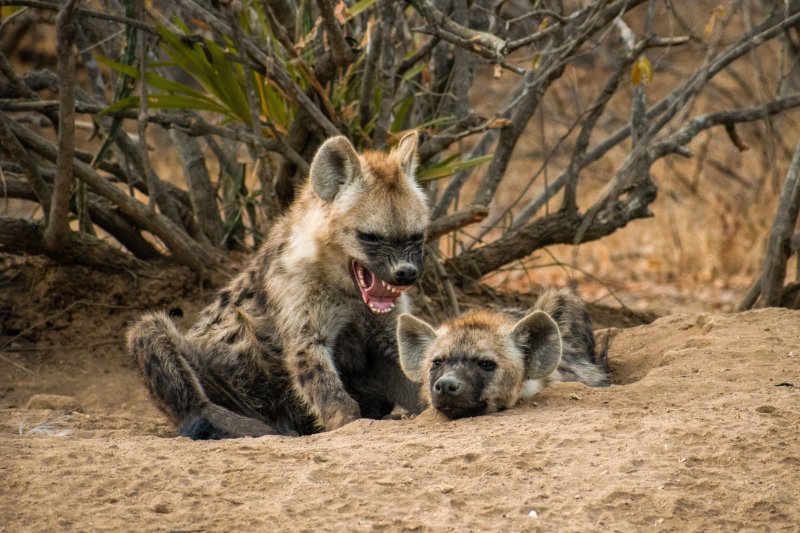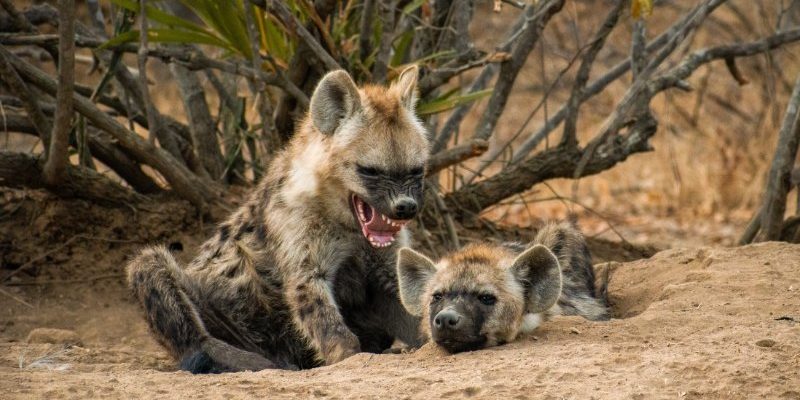
Think of hyaenas as nature’s cleanup crew. They’re often misunderstood and unfairly vilified, depicted as mere scavengers. However, they’re skilled hunters and have complex social systems. In many ways, they are the unsung heroes of the savanna, scavenging for food and helping to recycle nutrients back into the ecosystem. Sadly, human activities and habitat loss are putting pressure on their populations. As we explore the conservation landscape, we’ll discover the challenges hyaenas face, the efforts being made to protect them, and why these efforts matter for our planet’s health.
Understanding Hyaena Species
Hyaenas belong to the family Hyaenidae, and there are four main species you should know about: the spotted hyaena, the striped hyaena, the brown hyaena, and the aardwolf. Each of these species has distinct characteristics and behaviors, contributing to their unique adaptations in different environments.
- Spotted Hyaena: The most well-known species, these social animals live in large clans and are excellent hunters. Their complex social structures rival those of primates.
- Striped Hyaena: More solitary and less aggressive, these hyaenas are primarily scavengers and have a unique appearance with their striped fur.
- Brown Hyaena: Found mainly in Southern Africa, they have shaggy fur and prefer to hunt at night, often bringing their food back to dens.
- Aardwolf: Unlike their cousins, aardwolves primarily feed on termites and insects. They are nocturnal and have a unique way of foraging.
Understanding these differences isn’t just trivia; it’s crucial for conservation efforts. Each species faces unique threats, which means conservation strategies need to be tailored to their specific needs and habitats.
The Threats Facing Hyaena Populations
Hyaenas, while resilient, face numerous threats in the wild. Habitat loss is one of the most significant issues. As human populations expand, they encroach on hyaena habitats, leading to fragmentation of their territories.
Here’s the thing: when hyaenas lose their homes, they also lose access to food sources. This can lead to increased competition with other predators, driving some hyaena populations to decline. Other threats include:
- Poaching: Some cultures target hyaenas for traditional medicine or as trophies, further threatening their numbers.
- Human-Wildlife Conflict: Livestock predation leads to retaliation from farmers, resulting in hyaena killings.
- Climate Change: Altered weather patterns can impact prey availability and habitat conditions, making survival more difficult.
Recognizing these threats is the first step towards effective conservation. Without addressing these issues, hyaena populations may continue to dwindle.
Global Conservation Efforts
Conserving hyaenas isn’t just about saving the species; it’s about maintaining ecological balance. Various organizations and governments are working hard to protect these animals through a mix of strategies.
For example, several wildlife reserves focus on habitat protection and restoration. By creating safe spaces for hyaenas, conservationists hope to stabilize and increase their populations. Education plays a massive role, too. Local communities are being taught about the importance of hyaenas in the ecosystem.
Let’s look at a few key initiatives:
- Protected Areas: National parks and wildlife sanctuaries are established to provide safe habitats free from human disturbance.
- Community Engagement: Programs that involve local communities in conservation efforts have proven successful. When people see the benefits of protecting hyaenas, they’re more likely to support these efforts.
- Research and Monitoring: Scientists track hyaena populations to understand their behavior, health, and threats better. This data is essential for informing conservation strategies.
Through these combined efforts, there’s hope for hyaenas. However, ongoing support and commitment from the global community are necessary for lasting impact.
Why Hyaena Conservation Matters
You might be wondering why the plight of hyaenas should matter to you. Well, it’s simple: hyaenas are integral to their ecosystems. As scavengers, they help keep environments clean by consuming dead animals and waste. This process enriches the soil and promotes healthy plant growth.
Moreover, hyaenas are connected to various species within their habitats. Their decline could have a cascading effect, altering food webs and threatening other animals. Conserving hyaenas means preserving biodiversity and ecosystem health.
Additionally, hyaenas can be indicators of environmental health. If they’re thriving, it generally means that the ecosystem is balanced. So, when we invest in hyaena conservation, we’re not just helping one species—we’re supporting the entire ecosystem.
How You Can Help Hyaena Conservation
Feeling inspired to make a difference? You don’t need to be a wildlife expert to help hyaenas. There are several ways you can contribute to their conservation:
- Educate Yourself and Others: Learning about hyaenas and sharing that knowledge helps raise awareness. The more people know, the more support there is for conservation efforts.
- Support Wildlife Organizations: Many NGOs are dedicated to conserving hyaenas and their habitats. Donations can go a long way in funding research and protection initiatives.
- Advocate for Conservation Policies: Engage with local lawmakers and promote policies that protect wildlife and their habitats. Your voice can make a difference.
Every small action counts. By working together and spreading awareness, we can create a positive impact on the future of hyaenas.
The Road Ahead for Hyaenas
The future of hyaenas hangs in the balance, but there’s hope. With ongoing conservation efforts and increased awareness, we can work toward stabilizing and even increasing hyaena populations.
Conservation takes time, and the challenges are significant. But remember, every step counts. By supporting hyaena conservation, we’re also supporting the broader ecosystem and ensuring the survival of diverse wildlife.
In conclusion, yes, hyaenas are under threat. But with the right actions, we can help them thrive. So next time you think about these misunderstood animals, remember they’re more than just scavengers—they’re vital players in the circle of life. Together, let’s give hyaenas a fighting chance!

